Andrew Paul Wood – 25 June, 2010
Overlooking it all, like the Wizard of Oz's giant green head, on a big screen is projected Oram (times two) speaking in unison with himself - which is difficult to do when you are wearing a mouthguard, but that would appear to be the point; in all cases within the installation, the desired outcome is frustrated - an experience that burns in the heart like angina or valvulitis.
I think it was Sartre that pointed out that the problem with soccer is the other team - except that in the case of Christchurch artist James Oram’s Game Face, his second solo outing at The Physics Room, there is no other team.
Only balls - yellow, round, plastic ones for the audience to kick around and dribble. The goal has a door blocking its mouth - but whether this is to keep the balls out, or to facilitate by boxing you in the goal, is difficult to say.
Overlooking it all, like the Wizard of Oz’s giant green head, on a big screen is projected Oram (times two) speaking in unison with himself - which is difficult to do when you are wearing a mouthguard, but that would appear to be the point; in all cases within the installation, the desired outcome is frustrated - an experience that burns in the heart like angina or valvulitis. Much of Oram’s work to date has relied on the powerful emphatic and ritual effects of repetition like those by Alain Robbe-Grillet. Consider the hypnotic, languorous and almost chant-like reiteration of the word “lugubre” in Last Year in Marienbad (1961), the hypnotic liturgical conventions of Biblical poetry, or the gut-felt hammer-blows of the killing of the centipede in La jalousie (1957). Repetition concentrates power, authority and memory. Although there is a certain intrinsically repetitive quality to the looped video component, it is nowhere near as much so as earlier works.
Presumably the mouthguards and cage are symbolic of conventions that inhibit art and the communication of the idea. Soccer is an excellent metaphor for art - an exclusively human, non-utilitarian, and absurd (twenty-two men risking a certain amount of injury to kick a piece of leather into a net) - driving the idea home with efficiency and grace, scoring the goal.
Oram loves playing around with the cages of social conventions of what is expected, and here the stalking horses are the pressure to win, and the expectation of sporting chivalry. This has interesting resonances with the other installation on exhibit.
Judy Darragh is always a reliable performer (she’s practically New Zealand taonga), and in the small back gallery space she has set up a pared back, truncated, abbreviated version of her Studio of Exhaustion for Diligent Service which showed at Auckland’s Two Rooms previously.
Darragh, like Don Driver and a handful of other New Zealand artists, has a handle on what might (emphasis on the ‘might’) be called Arte Povera with its emphasis on found discards, thrown away readymades, the lowly, humble and simple. But she has an ebullient and kitsch/camp two dollar shop/big red Ware-Whare take on the aesthetic full of chatchkis and blingwads that is distinctive, post pop and fun - call it aesthetique du schlock (to borrow from Tom Wolfe). No pensées métaphysiques to worry about here, or at least none too deep - just giggle along with it in delight and recognition.
One is reminded of the section in Une saison en enfer in which Rimbaud lists: “I loved idiotic pictures, fanlights, stage scenery, backcloths used by street acrobats, shop signs, cheap coloured prints, unfashionable literature, church Latin, pornographic books full of spelling mistakes, grandmothers’ novels, fairytales, little books for children, old operas, silly refrains, simple rhythms.”
In this case, the ‘studio’ of the title must be one of those luxuriously appointed nineteenth century ones belonging to successful Academic painters beloved by the bourgeoisie. There are two components. One is an elegant ‘trophy’ cabinet; the trophies are made from modified water sipper bottles covered in aluminium foil. We are invited to consider the superficiality of popularity and the emptiness of competing for it. All that glisters is not necessarily gold, or even gold-plated, and may actually stain your skin green.
The other component is a Persian rug that miraculously (the internal structure providing the illusion is not obvious) rears up aggressively like a live thing, a magic flying carpet. I’m not sure of its significance, but it’s damned impressive looking.
Andrew Paul Wood
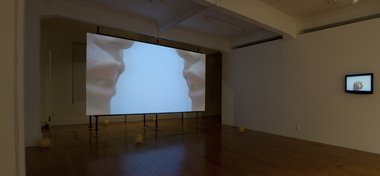
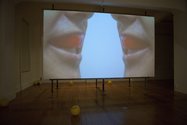
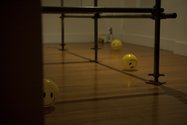
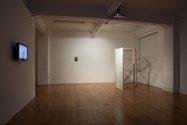
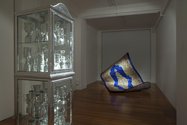
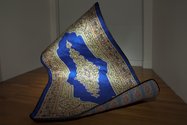
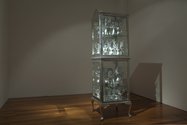
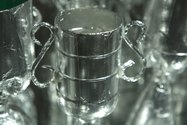
 Two Rooms presents a program of residencies and projects
Two Rooms presents a program of residencies and projects Advertising in this column
Advertising in this column



This Discussion has 0 comments.
Comment
Participate
Register to Participate.
Sign in
Sign in to an existing account.